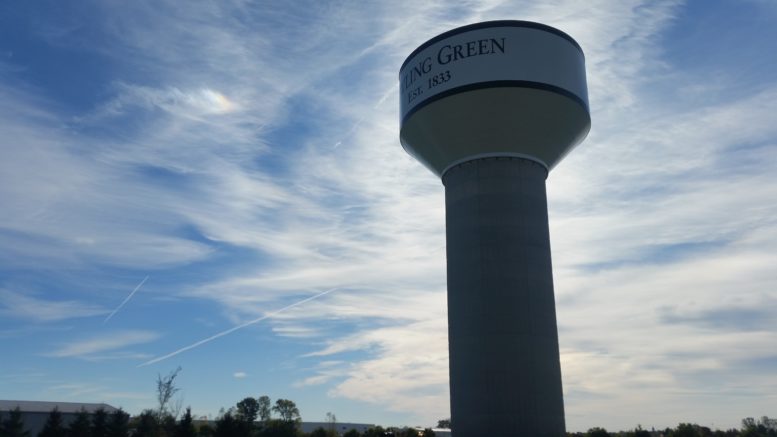By JAN McLAUGHLIN
BG Independent News
Two big businesses coming to the Bowling Green area have big water needs. But it’s nothing that Bowling Green can’t handle, according to the city’s Public Infrastructure Director Brian O’Connell.
The Abbott Laboratories plant planned on the north edge of Bowling Green may use up to 1 million gallons of water a day. Abbott plans to invest more than $500 million in the site and create 450 permanent jobs.
The yet to be named data center planned near Ohio 582 and Ohio 25, is also expected to be a heavy water user, perhaps requiring up to 600,000 gallons a day. The site will be served by the Northwestern Water and Sewer District, using Bowling Green water.
So Monday evening, the Bowling Green Board of Public Utilities approved a new contract with the district. The city already supplies the district with about 860,000 gallons of water a day.
The new contract would allow for the sale of an additional 600,000 gallons of water a day to the district, reaching a maximum of $1.5 million gallons a day.
The city has the capacity to treat the bigger demands for water – and has enough water from the Maumee River to supply the needs, O’Connell said after the meeting.
“The plant has never run out of water,” O’Connell said. While some upriver communities have run dry in the past, the intake for the Bowling Green water system is located in a “bowl” in the river, he said.
Among the communities that rely on the Maumee River for water, Bowling Green has an allotment of 14 to 15 million gallons a day. The city has the ability to treat 10 million gallons a day, but normally treats an average of 5 million gallons of water a day.
As part of the deal with the data center, the developer has reportedly agreed to build a 2 million gallon water tower to help meet the company’s water needs. That tower will cost an estimated $8 to $10 million to construct, according to O’Connell.
“We think it will be a benefit for the entire area,” said Tom Stalter, engineer with the Northwestern Water and Sewer District.
The city’s utility division has been planning ahead for the growing water demands.
Earlier this year, the Bowling Green Board of Public Utilities voted to proceed with a $4 million expansion of the membrane treatment process at the city’s water treatment plant.
The city’s goal is to complete the water treatment plant expansion in 2025, prior to Abbott beginning production sometime in 2026 or 2027.
“We have plenty of capacity in the plant to supply this water,” Assistant Utilities Director Jim Odneal said Monday evening.
Also earlier this year, the utilities board voted to allow the city to enter engineering and construction contracts, and to enter a loan agreement for the project from the Ohio Water Development Authority or the Ohio EPA.
Then in June, Bowling Green took another step toward expanding its reservoir capacity next to its water treatment plant that draws water from the Maumee River.
The Board of Public Utilities voted unanimously to purchase two acres that sit immediately north of the water treatment plant.
The new acreage could potentially double the water reservoir space at the plant, located at 17549 W. River Road. This was the second land purchase for more reservoir space. In early 2023, Bowling Green bought 36 acres to add reservoir space next to its water treatment plant.
The water treatment plant currently has a 170 million gallon raw water reservoir. The additional acreage purchased last year is expected to add storage for 100 to 150 million gallons of raw water.
The city pumps river water into the reservoir when the river has higher water quality. Efforts are made to avoid pumping when there are higher levels of pollutants in the river such as turbidity, sediment, storm events, nitrates, farm runoff, etc.
The reservoir then provides raw water to the plant for treatment. This allows the plant to use the best quality raw water for the treatment process which reduces costs and avoids potential issues.
The existing reservoir provides about 30 to 45 days of storage capacity based on the current water production.
Bowling Green water goes to several communities. The Northwestern Water and Sewer District supplies water from the BG plant to villages such as Bloomdale, Bairdstown, Weston, Portage, Liberty Center and McClure.
Bowling Green supplies water itself to other communities such as Waterville, Grand Rapids, Tontogany and Haskins.

